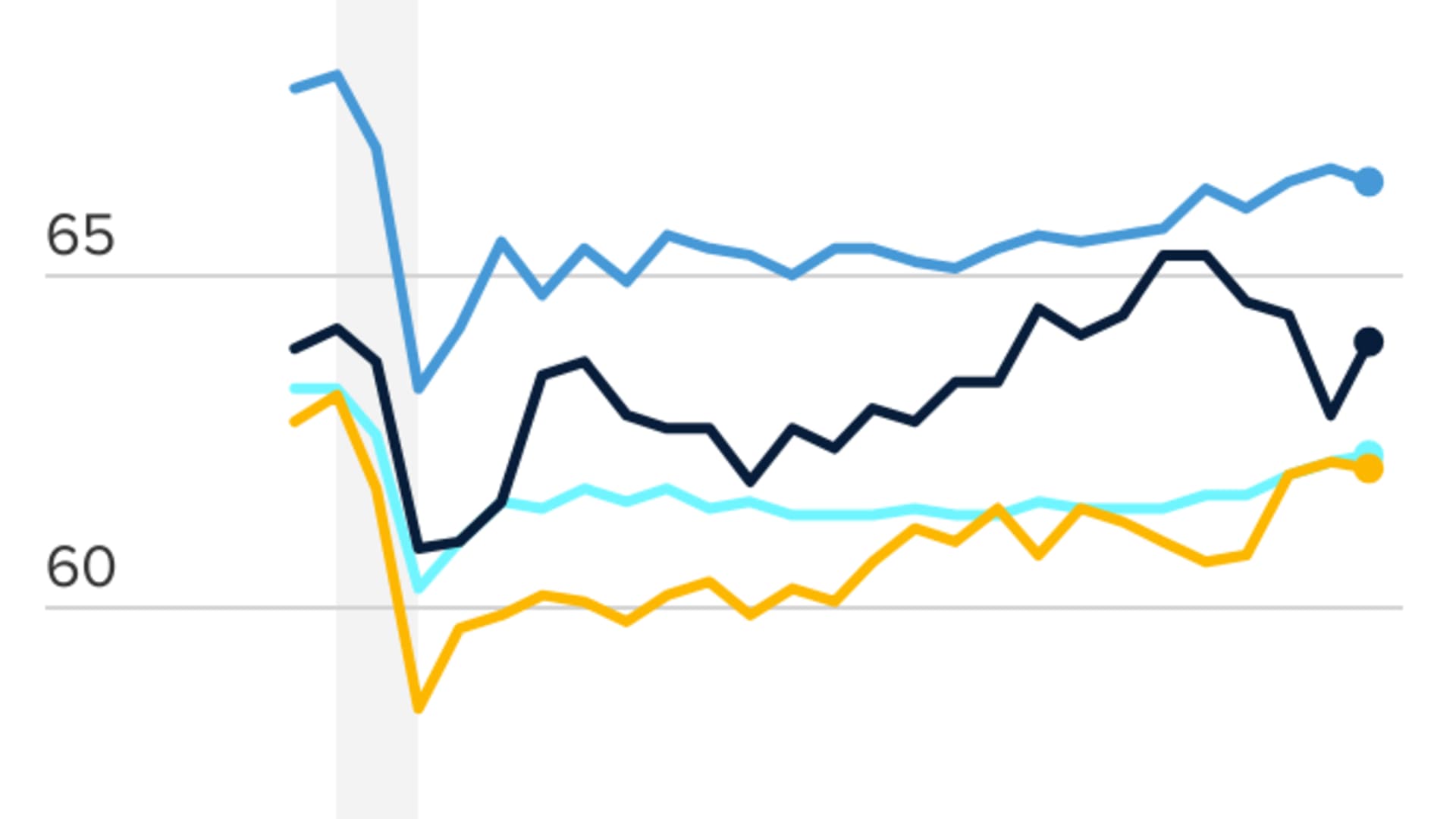
- Long-term unemployment declined by 274,000 in March, according to the Labor Department's monthly jobs report published Friday.
- About 24% of all jobless individuals are long-term unemployed. A year ago, that share hit a pandemic-era high over 43%.
- A hot job market is providing ample opportunity for workers, as employers recruit outside their traditional labor pool.
The ranks of the long-term unemployed fell again in March, edging closer to prepandemic levels as the job market offers ample opportunity for workers.
Long-term unemployment is a period of joblessness that lasts 27 weeks or more (or, at least six months). It's generally a financially precarious period for households in which it's harder to find a job and unemployment benefits are unavailable.
The number of long-term unemployed declined by 274,000 in March, to 1.4 million, according to the Labor Department's monthly jobs report issued Friday.
Get Southern California news, weather forecasts and entertainment stories to your inbox. Sign up for NBC LA newsletters.

In March 2021, the long-term jobless accounted for 43.2% of all unemployed individuals, a pandemic-era high and just shy of the all-time record 45.5%, which was set in April 2010 in the wake of the Great Recession.
By March 2022, the share had nearly halved to 23.9% and was approaching its prepandemic level of roughly 19% to 20%.
Money Report
Strong job market
The improvement comes amid a labor market that has been particularly strong for workers.
Job openings (an indicator of employer demand for workers) are near record highs and layoffs near record lows as businesses aim to hold onto the workers they have.

Annual wage growth is higher than at any point in over 20 years, according to economists at job site Indeed. Employees, enticed by higher pay and ample opportunity, have been quitting their jobs at near-record levels.
"As the labor market continues to expand and more options are available, that helps workers who are traditionally the last to return to the workforce, which includes workers who are unemployed for long periods of time," according to Daniel Zhao, a senior economist at career site Glassdoor.
More from Personal Finance:
These states have the highest and lowest tax burdens
Here's how to get relief at the gas pump now
The Great Resignation is still in full swing
The long-term unemployed often have a difficult time finding a job, due to factors like lost connections to work networks or frayed on-the-job skills, Zhao said. Employers also tend to prefer candidates without long gaps in employment history.
"But employers are competing fiercely for talent right now," Zhao said. "They're willing to overlook some of these concerns."
The March jobs report painted a rosy picture of overall employment.
The U.S. unemployment rate edged down to 3.6% in March from 3.8% the prior month, almost hitting its 3.5% level in February 2020 — which, in turn, was the lowest unemployment rate since December 1969.
The U.S. has added 562,000 new jobs per month in 2022, on average. That's almost exactly the same pace as average monthly job creation in 2021, according to Jason Furman, an economist at Harvard University and former chair of the White House Council of Economic Advisers during the Obama administration.
If the pace continues, the economy will recover all its lost pandemic-era jobs (22 million total) in June, Zhao said.

"It's remarkable how quickly the economy has recovered given how deep the crisis was," Zhao said.
It's unclear how long the worker-friendly labor market will persist. The Federal Reserve started raising interest rates to cool down the economy and reduce inflation, which is running at its fastest pace in 40 years. The war in Ukraine and any unforeseen Covid-19 curveballs pose potential headwinds to the U.S. economy, too.






